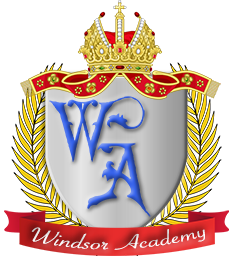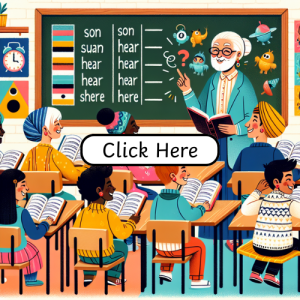The homophone resource page on my website serves as a valuable tool for enhancing understanding and mastery of homophones. This section is dedicated to providing a collection of resources that aid in learning and recognizing words that sound alike but have different meanings and spellings. From explanations and examples to exercises and interactive games, the resources on this page aim to support individuals in improving their grasp of homophones, ultimately enhancing their writing and communication skills. Whether you’re a student looking to strengthen your language skills or a teacher seeking supplementary materials, this resource page offers a range of tools to facilitate learning in a fun and engaging manner.
“Their” is a possessive pronoun used to show that something belongs to a group of people.
For example, “Their house is big.”
On the other hand, “There” is an adverb indicating a place or location.
For instance, “The book is over there.”
Remember, “their” shows possession, while “there” refers to a place. Understanding the distinction between the two words will help you communicate clearly in English and use them correctly in sentences.
Been or Being
“Being” is the present participle of the verb “be” and is used to show actions happening in the present or future.
For example, “She is being very patient.”
On the other hand, “Been” is the past participle of “be” and is used to indicate actions that have already occurred. For instance, “They have been to France.”
Understanding the difference between “being” and “been” helps in forming correct verb tenses. “Being” is used for ongoing actions, while “been” is used for completed actions.
Write or right
“Write” and “right” are homophones in English, which means they are pronounced the same but have different meanings.
“Write” is a verb that means to put words on paper or other surfaces using a pen or pencil.
For example, “I need to write an essay for my English class.”
On the other hand, “right” has multiple meanings, like referring to the direction opposite of left or denoting something that is correct or morally good.
For instance, “Turn right at the next intersection” or “She made the right decision.” Remember, “write” involves creating words, while “right” can mean the opposite of left or something correct.
Too, To or Two
In English, “two,” “too,” and “to” are commonly confused words due to their similar pronunciations.
“Two” is a number that comes after one and before three, like in “I have two apples.”
“Too” means also or excessively, as in “She wants to go too.”
“To” is a preposition indicating direction or the infinitive form of a verb.
For example, “Let’s go to the park” or “I need to study for the exam.” Remember, “two” is a number, “too” means also or excessively, and “to” is used for direction or before a verb.

